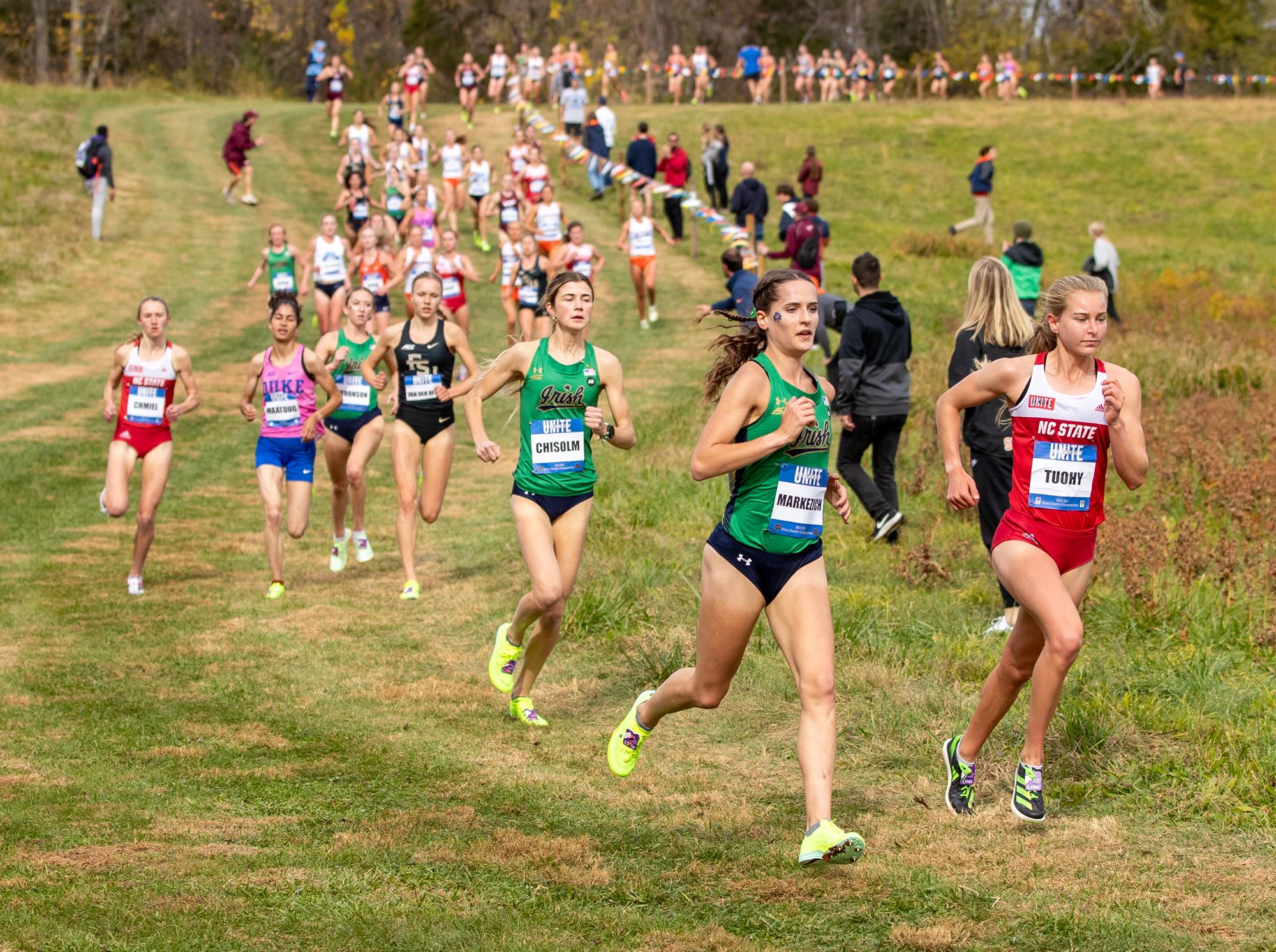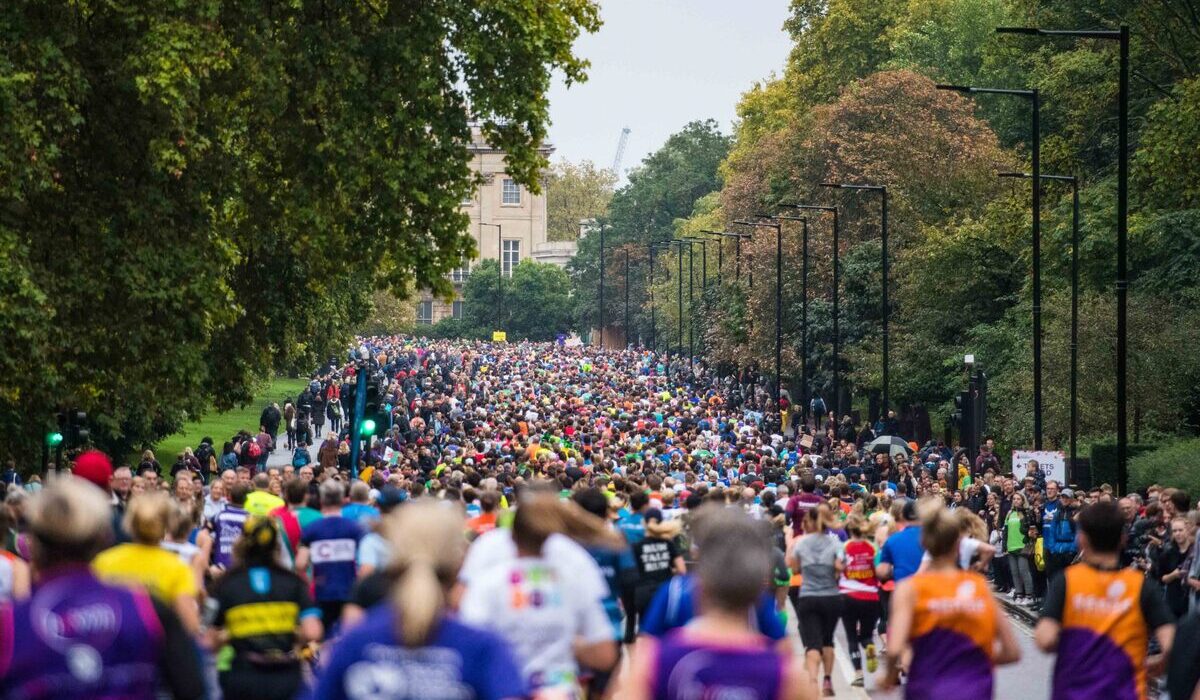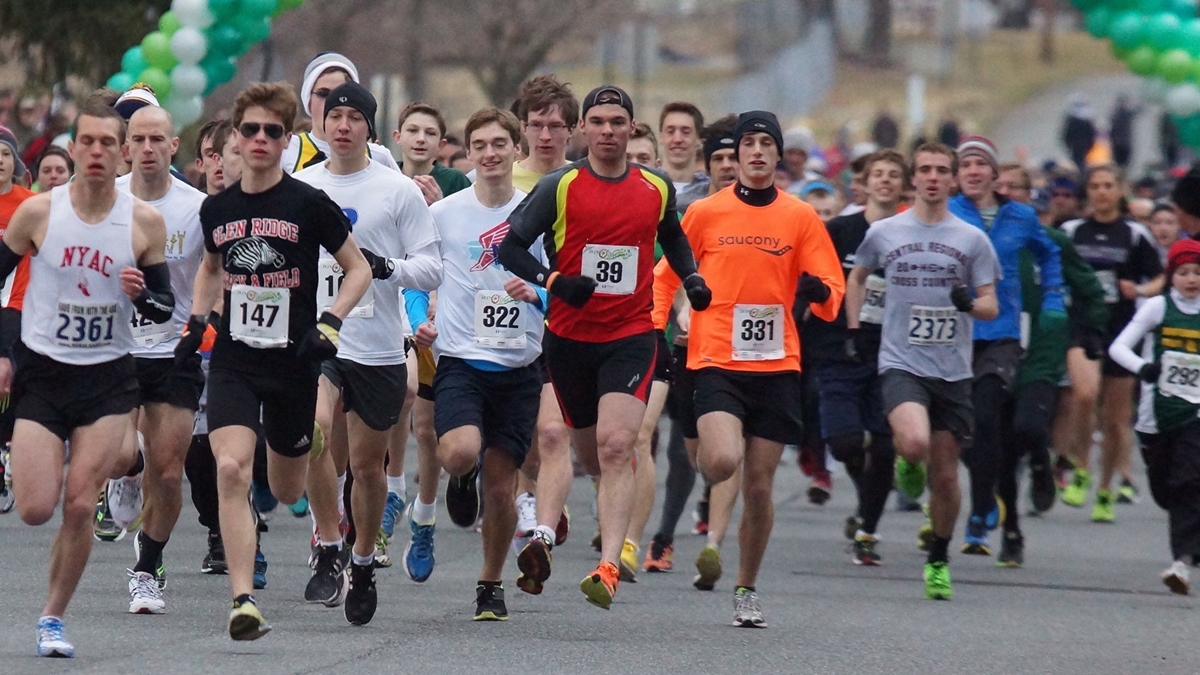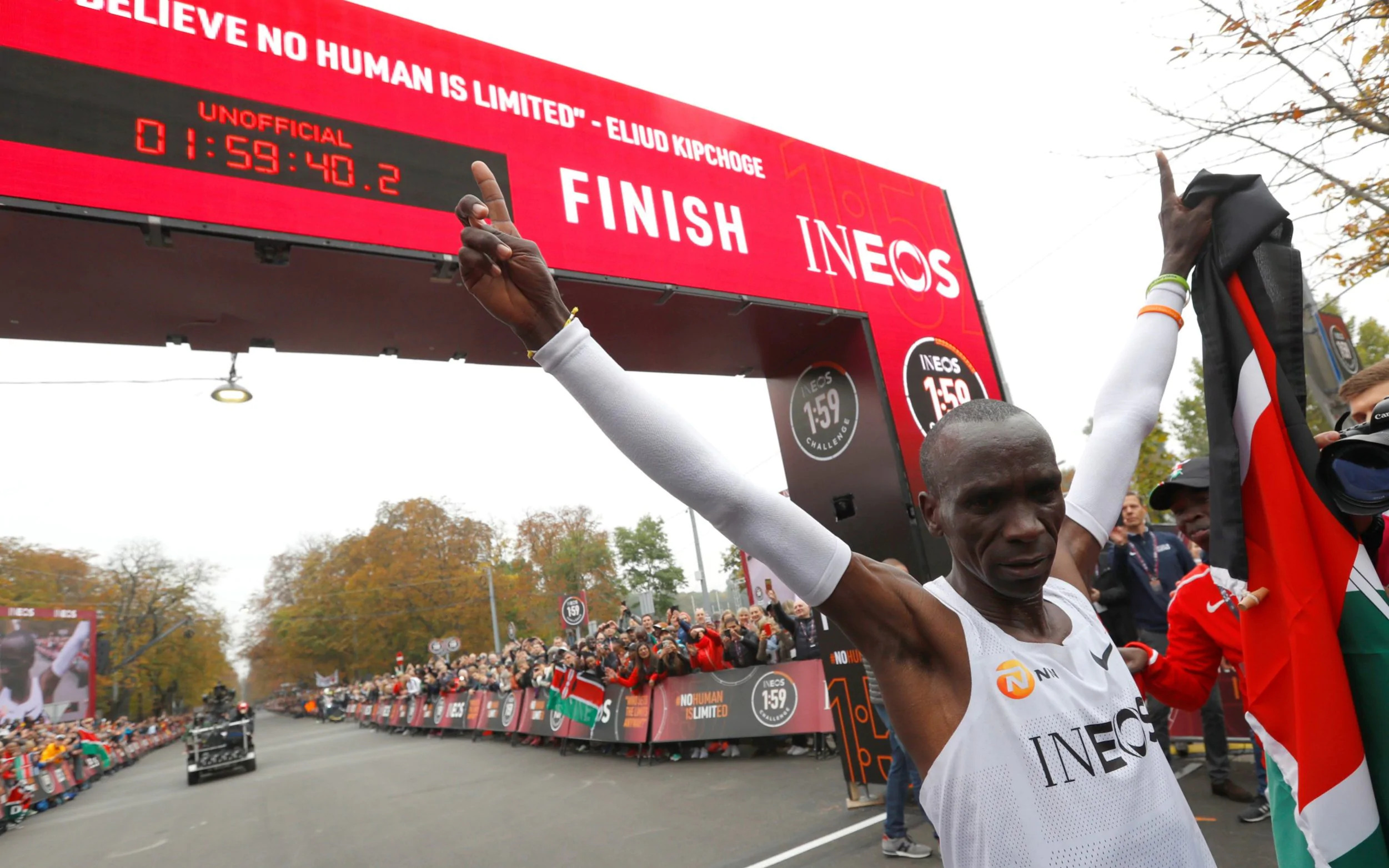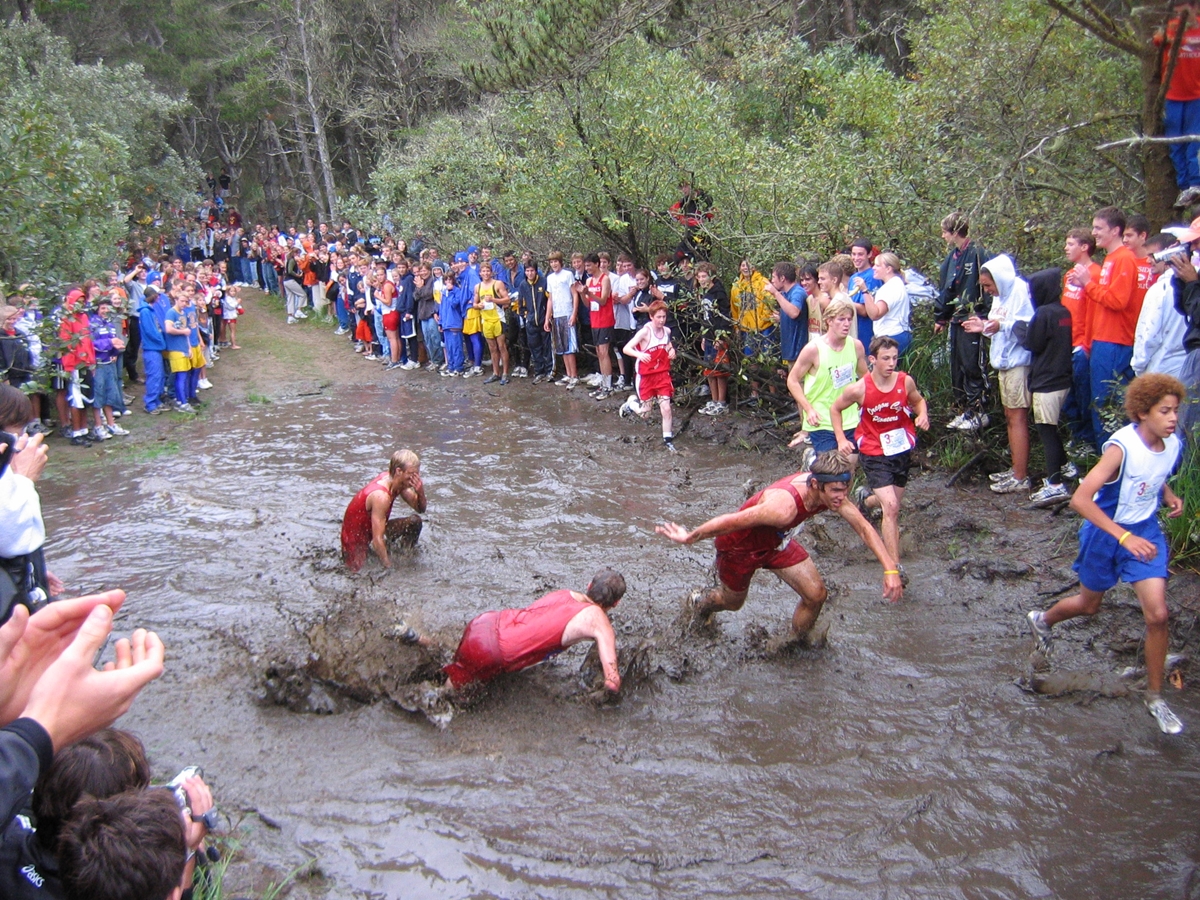

Featured
How Did Cross Country Start
Modified: August 19, 2023
Discover the fascinating history of how cross country running started. Explore its origins, development, and key milestones in this featured article.
Introduction
Cross country running is a sport that has captivated athletes and enthusiasts alike for decades. With its combination of endurance, strategy, and a deep connection to nature, cross country has stood the test of time and continues to thrive as a beloved athletic discipline.
Unlike track and field events that take place in stadiums, cross country races encompass a variety of terrains, from muddy trails to grassy fields. Runners navigate through uneven terrain, hills, and unpredictable weather conditions, making it a challenging and exhilarating sport.
The origins of cross country can be traced back to ancient times, where messengers would race across long distances to deliver important messages. This concept of endurance running evolved over time, giving birth to the sport we know today.
Throughout history, cross country has evolved and adapted to societal changes and athletic developments. From its early beginnings to its modern incarnation, cross country has become a global phenomenon, with athletes from all corners of the world competing in prestigious races.
This article will explore the rich history of cross country running, from its early origins to its current popularity as a sport. We will delve into the development of modern cross country racing, its recognition as an Olympic sport, and the unique characteristics of cross country in different countries. Additionally, we will discuss popular cross country races, training and preparation methods, the differences between cross country running and track and field, and the benefits and challenges of participating in this demanding sport.
Whether you are an avid cross country runner, a curious spectator, or simply interested in the history and culture of sports, join us as we dive into the world of cross country running and discover what makes it such a captivating and enduring discipline.
Early History of Cross Country
The roots of cross country running can be traced back to ancient civilizations where long-distance running was a necessity for various purposes. In ancient Greece, the concept of endurance running was prevalent, as messengers were required to cover vast distances to deliver important messages. Similarly, in ancient Egypt, long-distance running was a key component of military training.
One of the earliest recorded organized cross country races took place in England in the early 19th century. Known as “hare and hounds” races, a group of runners known as the “hares” would lay a trail for the pursuing members, called the “hounds,” to follow. These races often took place over challenging terrains, such as fields, forests, and streams, closely resembling the cross country races we see today.
As the sport gained popularity, cross country races began to take place in schools and universities, serving as a way to test the endurance and resilience of students. The first intercollegiate cross country race in the United States occurred in 1878 between Princeton and Columbia Universities.
During the early years of cross country running, the sport lacked formal rules and regulations. The races were often organized informally among groups of runners with their own set of guidelines. However, as interest in the sport grew, governing bodies began to emerge, establishing standardized rules and promoting fair competition.
By the early 20th century, cross country had become recognized as an organized sport. In 1903, the International Cross Country Union, now known as World Athletics, was established to govern and oversee the sport at an international level.
The early races of cross country running were predominantly male-focused, with limited opportunities for women to participate. However, as the sport evolved, the inclusion of women in cross country races became more prevalent, leading to the establishment of separate women’s competitions.
As cross country gained popularity, it became a staple of the Olympic Games. The sport made its Olympic debut in 1912 in Stockholm, Sweden, further solidifying its status as a prestigious and internationally recognized athletic discipline.
Through its early history, cross country running evolved from a practical means of long-distance communication into a competitive sport. Today, it continues to capture the hearts and minds of runners around the world, showcasing the inherent human desire for endurance, challenge, and the thrill of conquering diverse terrains.
Development of Modern Cross Country Racing
The development of modern cross country racing transformed the sport into a more structured and organized discipline. Over the years, the sport underwent significant changes in terms of race distances, course layouts, and participant categories.
In the early stages of modern cross country, races were typically held over long distances, sometimes exceeding 12 miles. However, as the sport grew in popularity and participation increased, standardized race distances were established. Today, the most common distances for cross country races are 5 kilometers (3.1 miles) and 10 kilometers (6.2 miles).
The layout of cross country courses has also evolved. Early races took place on natural terrains, including fields, forests, and hills. In the mid-20th century, the use of purpose-built cross country courses became more prevalent, allowing for greater control over the course layout and terrain. Modern cross country courses often feature a mix of grass, dirt, and gravel, incorporating challenging inclines, descents, and obstacles to test the runners’ skills.
The popularity and recognition of cross country running led to the formation of national and international governing bodies. These organizations set standards for races and oversee various aspects of the sport, such as rule enforcement, race classifications, and the organization of championships and international competitions.
One notable development in modern cross country racing is the inclusion of age and gender categories. Races are typically divided into various divisions, allowing for fair competition within specific age groups and between male and female participants. This inclusion has provided opportunities for a wider range of runners to compete in the sport at all levels, from recreational runners to elite athletes.
In recent years, technological advancements have also played a role in the evolution of cross country racing. Electronic timing systems allow for accurate and efficient recording of race times, reducing the potential for human error. Additionally, GPS tracking devices and other wearable technologies have enabled runners and spectators to track and analyze their performance in real-time.
Through the development of modern cross country racing, the sport has become more accessible, standardized, and competitive. The establishment of governing bodies, defined race distances, and the inclusion of age and gender categories have contributed to the growth and popularity of the sport around the world.
As cross country continues to evolve, new advancements and innovations are likely to shape the future of the sport, ensuring that it remains a thrilling and challenging endeavor for generations to come.
Cross Country as an Olympic Sport
Cross country has had a longstanding presence in the Olympic Games, solidifying its status as a revered and internationally recognized sport. The inclusion of cross country running in the Olympics has provided athletes with the opportunity to showcase their endurance, skill, and versatility on the world stage.
Cross country made its Olympic debut in 1912 in Stockholm, Sweden. Initially, the Olympic cross country race was a grueling event, covering distances of more than 10 kilometers (6.2 miles). Over time, the race distances became more standardized, settling on approximately 10 kilometers for both men and women.
One of the defining characteristics of cross country in the Olympics is the diverse and challenging course layouts. Olympic cross country courses are designed to test the runners’ abilities, incorporating a variety of terrains, obstacles, and natural elements. From steep hills and muddy trails to water crossings and uneven surfaces, the courses require athletes to navigate through unpredictable and demanding conditions.
The inclusion of cross country in the Olympics has brought a sense of prestige and honor to the sport. Athletes from all corners of the globe aspire to represent their countries and compete against the world’s best in this highly regarded competition. The Olympic cross country race showcases the incredible talent, determination, and resilience of the athletes, captivating audiences worldwide.
Over the years, many legendary athletes have left their mark on Olympic cross country. Emil Zátopek of Czechoslovakia, often referred to as the “Czech Locomotive,” dominated the sport in the 1950s, winning three gold medals in the Olympic 5,000-meter, 10,000-meter, and marathon events. Other notable athletes, such as Haile Gebrselassie of Ethiopia and Tirunesh Dibaba of Ethiopia, have also achieved tremendous success in Olympic cross country.
In recent times, there has been a growing emphasis on gender equality in Olympic cross country. In 2018, the International Olympic Committee announced that the mixed-gender cross country relay event would be added to the program, providing a more balanced representation of male and female athletes in the sport.
The Olympic Games serve as a platform for cross country runners to inspire the next generation of athletes and showcase the beauty and excitement of the sport. The global stage, combined with the tradition and prestige of the Olympics, elevates the significance and impact of cross country as an athletic discipline.
With each iteration of the Olympic Games, cross country continues to captivate audiences worldwide with its thrilling races, extraordinary athleticism, and unforgettable stories of triumph and perseverance.
Cross Country in Different Countries
Cross country running has a rich and diverse presence in various countries around the world. While the basic principles of the sport remain the same, each country has its unique traditions, races, and approaches to cross country.
In the United States, cross country is deeply ingrained in the school and collegiate sports culture. High school cross country is a popular sport, with teams competing in both regional and national championships. Collegiate cross country races draw large crowds and provide a platform for talented runners to showcase their skills. The NCAA Cross Country Championships, held annually, are highly anticipated events that highlight the best college runners in the country.
In Europe, cross country’s popularity is widespread. Countries like the United Kingdom, Ireland, and Norway have a long-standing cross country tradition, with races dating back over a century. The United Kingdom hosts the renowned English National Cross Country Championships, attracting elite runners from across the country. Additionally, European countries often participate in the European Cross Country Championships, a prestigious event that showcases the continent’s top talents.
In Kenya and Ethiopia, cross country holds significant cultural importance and serves as a pathway to international success in long-distance running. These East African nations have a remarkable history of producing world-class distance runners who excel in cross country races. The annual IAAF World Cross Country Championships often sees Kenyan and Ethiopian athletes dominating the competition.
Australia, New Zealand, and South Africa also have thriving cross country scenes. These countries host a variety of races, from small community events to larger championships. In Australia, the National Cross Country Championships bring together talented runners from different states to compete for national titles. South Africa boasts the popular South African Cross Country Championships, which attract a mix of professional and amateur athletes.
Asian countries like Japan and India are also embracing cross country running. Japan has a strong tradition of cross country, with races held at the high school and collegiate levels. India, with its diverse terrain, has seen a rise in cross country participation, with athletes competing in events such as the Indian National Cross Country Championships.
Each country’s cross country culture is influenced by its unique environment, heritage, and sporting traditions. Whether it’s the passion of American high school cross country, the rich history of European races, or the dominance of East African runners, cross country’s global appeal continues to grow, uniting athletes and spectators from all corners of the world.
Popular Cross Country Races
Cross country races have gained immense popularity worldwide, attracting both professional runners and enthusiastic amateurs. These races offer participants the chance to test their endurance, compete against their peers, and immerse themselves in the exhilarating atmosphere of the sport.
One of the most prestigious and well-known cross country races is the IAAF World Cross Country Championships. This annual event brings together elite athletes from around the globe to compete for individual and team titles. The course changes every year, ensuring varied and challenging terrain for the runners.
In Europe, the European Cross Country Championships is a highly anticipated event. It showcases the top European cross country runners, pitting nations against each other in exhilarating team competitions. The event draws a large audience and highlights the rich cross country tradition in Europe.
In the United States, the NCAA Cross Country Championships is a significant event on the collegiate sports calendar. It features the best college runners from different conferences competing for individual and team honors. The event attracts a large audience and serves as a platform for young athletes to showcase their talent.
Another popular cross country race is the English National Cross Country Championships, held annually in the United Kingdom. It brings together athletes from diverse backgrounds to compete for national titles. The event has a rich history that spans over a century and celebrates the passion and tradition of cross country running in the country.
For those seeking a unique cross country experience, the Hahnenkamm Cross Country Race in Austria offers a thrilling and scenic challenge. Taking place in the picturesque Kitzbühel region, the race combines cross country running with stunning alpine views, creating a one-of-a-kind race experience.
The African continent also hosts notable cross country races. The East African Cross Country Championships showcases the talent of Kenyan, Ethiopian, and other East African runners who dominate the long-distance running scene. These championships serve as qualifiers for global competitions and bring fierce competition among some of the world’s best cross country athletes.
Other popular cross country races include the Balmoral Castle Cross Country Race in Scotland, the Great Edinburgh Cross Country in the United Kingdom, the XC Ottawa Invitational in Canada, and the Fun Mud Run in Australia. These races attract a range of competitive runners and provide an opportunity for recreational participants to experience the thrill of cross country running.
Whether on a global scale or within local communities, cross country races offer a chance for runners of all abilities to challenge themselves, forge connections with fellow athletes, and celebrate the camaraderie of the sport. From prestigious championships to unique and scenic events, the popularity of cross country races continues to grow, attracting participants from diverse backgrounds and fostering a love for the sport worldwide.
Training and Preparation for Cross Country
Training for cross country is a unique and rigorous process that requires a combination of endurance, speed, strength, and mental resilience. To excel in this demanding sport, athletes must follow a structured training program and engage in specific preparations.
- Endurance Training: Endurance is a fundamental aspect of cross country running. Athletes focus on building their aerobic capacity through long-distance runs, steady-state workouts, and interval training. This helps improve oxygen utilization and allows runners to maintain a steady pace throughout a race.
- Speed Training: Speed is crucial in cross country, especially during intense race situations or when overtaking opponents. Athletes incorporate speed workouts such as intervals, fartlek runs, and tempo runs into their training regimen to improve their overall speed and race pace.
- Strength Training: Cross country requires athletes to navigate various terrains and handle challenging inclines. Strength training, including resistance exercises, core workouts, and plyometrics, helps develop the necessary leg and upper body strength to tackle these obstacles effectively.
- Interval Training: Interval training, which involves alternating between high-intensity bursts and recovery periods, is a key component of cross country preparation. This type of training improves speed, endurance, and anaerobic capacity, helping runners handle changes in pace during races.
- Running Form and Technique: Proper running form is crucial for injury prevention and optimal performance. Athletes work on maintaining an upright posture, a relaxed upper body, and an efficient stride. They also focus on foot placement and arm movement to improve efficiency and conserve energy.
- Specificity Training: To prepare for the unique challenges of cross country, athletes incorporate specific training components. This includes practicing on similar terrain, such as grassy fields, trails, or muddy surfaces, to adapt to the varying conditions they will encounter during races.
- Mental Preparation: Cross country is as much a mental game as it is a physical one. Athletes work on mental preparation techniques, including visualization, goal-setting, and developing a positive mindset to overcome challenges, maintain focus, and push through fatigue during races.
- Proper Nutrition and Hydration: To support their training and optimize performance, cross country runners pay attention to their nutrition and hydration. They fuel their bodies with a balanced diet, focusing on carbohydrates for energy, lean proteins for muscle repair, and adequate hydration to prevent dehydration.
- Rest and Recovery: Rest and recovery are essential components of cross country training. Athletes incorporate rest days into their schedule to allow their bodies to recover and adapt to the physical demands of training. Quality sleep, stretching, and massage therapy also help promote recovery and prevent injuries.
By following a well-rounded training program that includes endurance, speed, strength, and mental preparation, cross country runners can enhance their performance, minimize the risk of injuries, and achieve their athletic goals. Whether it’s a beginner or a seasoned competitor, proper training and preparation are key to succeeding in the challenging and exhilarating sport of cross country.
Cross Country Running vs. Track and Field
Cross country running and track and field are both athletic disciplines that involve running, but they differ in various aspects, ranging from course terrain to race distances and strategies. Understanding the distinctions between these two sports helps athletes determine which discipline aligns with their interests and strengths.
Course and Terrain: Perhaps the most significant difference between cross country and track and field is the course terrain. Cross country races take place on natural terrain, including grass, dirt, trails, and sometimes even muddy or hilly surfaces. In contrast, track and field events are held on synthetic tracks with consistent surfaces and marked lanes.
Race Distances: Another key distinction is the race distances. Cross country races typically cover longer distances compared to track and field events. Cross country distances vary but commonly range from 5 kilometers (3.1 miles) to 10 kilometers (6.2 miles), while track and field events include sprints ranging from 100 meters to middle-distance races like the 800 meters, as well as longer distances such as the 1500 meters, 5000 meters, and 10,000 meters.
Race Strategy: Due to the differences in course terrain and distance, race strategy also varies between cross country and track and field. In cross country, runners must navigate through changing terrains, hills, and obstacles, requiring them to pace themselves strategically and conserve energy. In track and field, the focus is often on speed and timing, with athletes aiming to maximize their performance over shorter, more controlled distances.
Training Focus: The training focus for cross country and track and field athletes also differs. Cross country training emphasizes building endurance and strength to tackle varying terrains and longer distances. Runners often include hill workouts and trail running to prepare for the demands of cross country races. In track and field, training focuses on developing speed, agility, and specific techniques for shorter and more explosive events.
Team vs. Individual Competitions: Cross country often emphasizes team competition, with team scores calculated based on the finishing positions of individual runners. In contrast, track and field has both team and individual competitions, with athletes earning points for their team, but also having the opportunity to compete individually in specific events.
Season and Environment: In most regions, cross country season takes place in the fall or winter, exposing runners to potentially challenging weather conditions. Track and field, on the other hand, often has a separate season in the spring or summer, allowing for more predictable and favorable weather for competition.
Despite these distinctions, cross country and track and field share the common thread of running as a foundational element. Athletes who participate in both disciplines often find that the training and skills acquired in one sport can positively impact their performance in the other, making them more well-rounded runners.
Ultimately, the choice between cross country and track and field depends on an individual’s preferences, strengths, and goals. Both sports offer unique challenges and rewards, and athletes can find fulfillment and success in whichever discipline aligns best with their skills and interests.
Benefits and Challenges of Cross Country
Cross country running offers a range of physical, mental, and social benefits, but it also presents its fair share of challenges. Understanding these benefits and challenges can help athletes and enthusiasts grasp the essence of this demanding sport.
Physical Benefits: Cross country running provides numerous physical benefits. The sport improves cardiovascular fitness, as the long distances and varying terrains require runners to develop endurance and stamina. It also enhances muscular strength, particularly in the legs and core, as runners navigate through inclines and uneven surfaces. Cross country is a full-body workout that engages various muscle groups and contributes to overall fitness, agility, and coordination.
Mental Benefits: Cross country running not only challenges the body but also strengthens the mind. It fosters mental resilience, as runners must push through fatigue, overcome obstacles, and maintain focus during races. The sport instills discipline, determination, and perseverance, helping athletes develop a strong mental fortitude that extends beyond the racecourse into other aspects of life.
Connection with Nature: Cross country offers a unique opportunity to connect with nature. Runners often train and compete in scenic outdoor locations, immersing themselves in the beauty and tranquility of natural surroundings. The sport allows individuals to escape from the busy urban environment and experience the calmness and serenity of running through forests, fields, or along trails.
Social Benefits: Cross country fosters a strong sense of camaraderie and teamwork among athletes. Many schools and clubs organize cross country teams, encouraging a supportive and collaborative environment. Runners bond over shared training experiences, motivate each other during races, and celebrate collective achievements. The sport also offers opportunities to meet and connect with fellow runners from different backgrounds and cultures.
Challenges: Despite its benefits, cross country comes with its own set of challenges. The demanding terrain and varying weather conditions can pose physical and mental obstacles. Runners must adapt to uneven surfaces, manage mud or slippery conditions, and endure extreme temperatures. The unpredictable nature of cross country courses, with unexpected obstacles or steep hills, requires runners to constantly adjust their pace and strategy.
Training Commitment: Cross country requires a dedicated training regimen to build the necessary endurance, strength, and speed. This can involve long training hours, consistent running routines, and adherence to a structured program. Finding the balance between training and other obligations can be challenging, particularly for student-athletes juggling academics and extracurricular activities.
Injury Risk: Like any sport, cross country carries the risk of injuries. The repeated impact on the lower body, combined with the demands of varied terrains, can lead to sprains, strains, or overuse injuries. Proper training techniques, adequate rest, and listening to the body are essential in minimizing the risk of injuries.
Despite these challenges, the physical and mental benefits of cross country, along with the sense of accomplishment and the joy of running, continue to attract individuals to this enduring and captivating sport.
Conclusion
Cross country running is a sport of resilience, determination, and connection to nature. Its origins in ancient communication and military systems have evolved into a globally cherished athletic discipline that captivates both athletes and spectators alike. From its early roots to modern-day competitions, cross country has undergone significant developments, establishing itself as a unique and demanding form of running.
Throughout the years, cross country has provided athletes with opportunities to showcase their endurance, speed, and mental fortitude. The sport’s inclusion in prestigious events like the Olympic Games and the World Cross Country Championships has elevated its status and fostered a sense of community among runners from diverse backgrounds.
Cross country offers a multitude of benefits, including physical fitness, mental resilience, a connection with nature, and a sense of camaraderie. Through the challenging terrains and varying conditions, runners develop strength, both mentally and physically, that extends beyond the racecourse into other areas of life.
However, cross country also presents its fair share of challenges. From the demanding training schedules to the unpredictable nature of the courses, runners must overcome obstacles and endure physical and mental fatigue. Yet, it is precisely these challenges that make cross country such a rewarding and exhilarating endeavor.
Whether on grassy fields, muddy trails, or challenging hills, cross country runners push their limits, break down barriers, and embrace the spirit of competition. The sport’s testament to perseverance, teamwork, and personal growth is what continues to attract individuals to its pursuit.
As cross country continues to evolve, it remains a timeless sport that showcases the resilience of the human spirit. From the local community races to the global championships, cross country embodies the pursuit of excellence, the love for running, and the connection with nature.
So, lace up your shoes, embrace the challenge, and immerse yourself in the exhilarating world of cross country running. Whether you are a beginner, a seasoned competitor, or an avid spectator, cross country offers a unique and memorable experience that will leave a lasting impression on your athletic journey.
